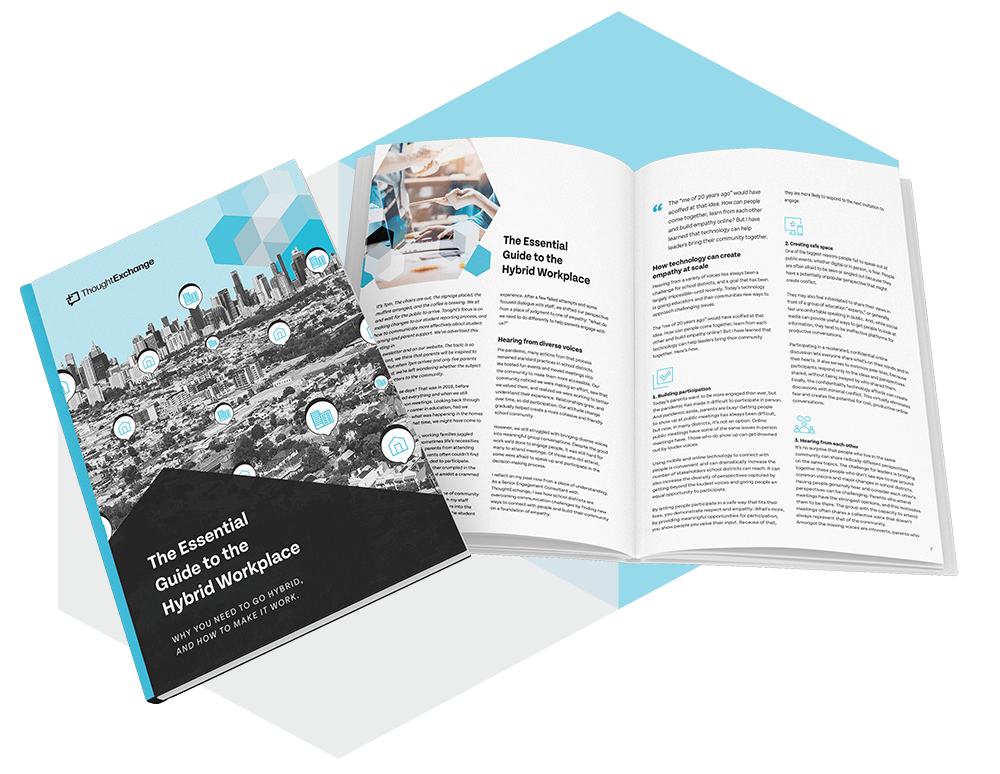May 26, 2025
Sarah Rodrigues
How to Make Better Cost-Cutting Decisions with Collective Intelligence
7minutes
Operational efficiency is, essentially, figuring out how to increase or maintain outputs such as production units, sales, and profitability—while decreasing inputs such as employee time, materials costs, and other expenses. Our previous post about efficiency showed how organizations can streamline and optimize their existing processes to make better use of their inputs. Regardless of market conditions, this is always a valuable exercise to engage in to ensure you’re maximizing the value of your resources.
Even if an organization is perfectly optimized, the current economic outlook may require a closer look at the balance sheet to determine if and where they can cut inputs. Many companies are making the difficult choice to reduce product offerings, eliminate “perks” and benefits, and, ultimately, lay off staff.
Leadership will have to make difficult cost-cutting decisions, which may be poorly received by teams that already feel pressured or burnt out. Remember these guidelines when discussing potential cuts with staff:
- Communication is key. Fully explain the context and business case for cost-cutting decisions without blame.
- Be empathetic. Employees will feel a range of emotions, and leaders should provide space for those feelings.
- Be straightforward and transparent. This isn’t a press release or marketing campaign, so avoid the spin. Demonstrate your commitment to honesty and willingness to move forward together.
- Be visible. Leaders should always be at the forefront of these conversations and make themselves available to employees with questions.
- Be clear about next steps. Provide a path forward that involves everyone. Be honest but reassuring about how you plan to improve the situation and how these cuts will help you get there.
- Involve employees in the cost-cutting decisions. Ask employees to weigh in on which activities are most important, cuts they could willingly make, and what they could improve to avoid further cuts.
With these tips in mind, here are some areas you could explore to make informed cuts, reduce expenses, and align on how to move forward.
Do business differently
Conveniently, remote work can also help save money for both employees and employers.
One study found that for each employee working even half the time from home, companies could save an average of $11,000 per year, or $22,000 for a fully remote worker. This is the result of lower (or zero) real estate and overhead costs, as well as the increased productivity and decreased absenteeism reported by remote workforces. Turnover also tends to be lower, so recruiting and training costs decrease.
But what about those big strategy meetings, where you just have to have everyone in a room? For global companies, these meetings often involve thousands of dollars in travel, not to mention the lost productivity, as senior leaders converge on a central location to make difficult decisions. We’d do that differently, too.

Find and eliminate non-value-added activities
In times of innovation, many leaders are happy to ask, “What should we start doing?” But it’s just as important to ask—particularly when budgets are tight—“What should we stop doing?”
Non-value-added activities include any elements of work that consume resources but don’t enhance the product or service you’re offering. Some examples of NVAs include:
- Duplication of effort
- Correcting errors
- Excessive meetings
- Unnecessary data entry
These activities, and many others, could all be using valuable resources and costing you money.
So stop spending time and money on things that don’t add value. It sounds simple, right? But in a large organization, it is a huge undertaking for leaders to cut these NVAs—first, they must be identified, then verified, and finally eliminated. You wouldn’t want to cut something that had an unintended negative impact on your customers, product, or employees!
We recommend leveraging the collective intelligence of your employees for this one, first by asking employees to identify NVAs, then by asking them to prioritize or verify those cuts based on their impact.
Explore creative ways to make cost-cutting decisions
Your leadership team may have already identified the line item or business area where they need to improve the balance sheet. Often this is where red pens come out. Instead of slashing payroll and budgets right away, consider some creative alternatives to reduce costs:
- Cut payroll costs by reducing salaries or work hours to avoid layoffs (and the expensive severance packages that come with them)
- Offer voluntary unpaid leaves or furloughs, job sharing, and unpaid time off
- Look into grant and tax incentive programs offered by all levels of government
- Audit your tech stack and subscription services (see below!)
Align on strategy
When it comes to cost-cutting decisions, aligning on strategy and accessing the collective intelligence of the team have many benefits:
- Leaders can avoid cuts that negatively impact the company’s strategic goals. Imagine making cuts to the R&D team because you didn’t realize product innovation was the main driver of growth in the new strategy!
- Employees who understand the strategy can identify bad costs and NVAs more easily and bring those cut suggestions to leadership.
- Cutting bad costs can help teams refocus and work more efficiently in the long term.
- Employees who understand the context for and value of cuts that align with the strategy will be more engaged in that strategy’s success.
Budget cuts and layoffs may become inevitable, but aligning on strategy first by leveraging the power of your employee insights to make informed decisions will help ensure those cuts are serving the business’ long-term goals.
Make cost-cutting decisions with collective intelligence
Business efficiency is what can make or break your organization. If you’re stuck in old ways of doing business—making across-the-board cuts without strategic alignment—you may find it challenging to navigate unsure economic conditions and a changing workforce landscape. You can keep doing things the same way they’ve always been done, or you can use a platform designed to access your organization’s collective intelligence to make better decisions, faster.
ThoughtExchange’s unique software platform makes it easy to gather the most innovative ideas from your workforce, align employees to the strategy, and make cuts that address core issues to impact the bottom line. Every day, our enterprise customers are tapping into their teams to ideate, implement, and improve their data, processes, and strategic decisions—so the market never catches them off guard.




